Enrollment management, both new enrollment and retention, is one of the primary concerns of Catholic School leadership. Dr. Mazie McCoy developed a strong plan for Corpus Christi Catholic School with support from her peers at the National Catholic School Mentorship program and Meitler consultants.
Schools
Meitler Minute
Why is now the right time to make a plan? Planning helps differentiate between “urgent” and “important.” Planning articulates a vision that pastors, lay leadership, and principals will use as a basis for making decisions about organizing and utilizing resources. We would be happy to meet with you to show how Meitler and Ruotolo Associates can help you make a great plan for your future.
Is Getting Money Really That Hard?
I accepted my first principal position in 2000. I was excited at the prospect of leading and creating a culture of learning and continuous school improvement. I set my focus on developing a comprehensive plan for curriculum and instruction, expanding programming, and onboarding new staff. With my skilled and dedicated teachers, we received formal recognition for our curriculum work. Not only was hard work essential to achieve our goals, but it also required money, and getting money was the easiest part. Having a supportive pastor and financially sound parish allowed us to move forward in many improvement initiatives. It was what I fondly remember as the school budgeting “good old days”.
Fast forward 15 years and three schools later, I identified two areas of needed improvement, instructional programming, and a plan to increase teacher salaries. Both initiatives required substantial funding. At the same time, our school enrollment was declining and unsurprisingly parish financial commitments decreased as fewer parishioners participated in stewardship. The school had been dependent on the deep pockets of parents to accomplish its goals and thus, there was no funding strategy. To move forward with our important work my focus quickly became fund development planning, aka getting the money.
Fund development planning requires a team of dedicated individuals and a clear direction. Here are some valuable points to help guide your work.
- Using a SWOT Analysis
It is important to look at your school’s current situation with your newly established fund development team. Diving deep into Strengths, Weaknesses, Opportunities, and Threats will guide you in your planning and define your objectives. - Donors
Identify alumni, parents, grandparents, and businesses in your community that have demonstrated interest in your school’s mission. With those key persons identified, develop strategies to build those relationships while determining methods of solicitation. Create opportunities for outreach, appeals, and giving. Keep in mind, your beginning touchpoints should focus on positive and consistent communication about your school before an “ask” is made. - Create a Database
It is vital to create a database of alumni, parishioners, grandparents, and businesses. Again, it is important to include personal or face-to-face solicitation with each group. Outreach should be enhanced through your school’s marketing team. - Development Funds
Categorize your plan into three areas: What, Three-year periods of Results, and Future Expectations. - Development Action Plan
This section of the plan is comprised of actionable items and the persons responsible. Categories include What, Who, When, Status, and Expected Results - Measuring Success
Annually, measure the following areas: Donation amounts, Number of new prospects, Number of reoccurring donors, Effectiveness of relationship-building strategies, and Number of pledges.
We experienced an increase in funding by effectively engaging and building positive relationships with our donors. By following our plan, getting the money became much easier.
The Growing Number of Nones
Your eyes are not deceiving you. The title neither refers to “nuns” nor is it a misspelling. For the first time in the history of the United States, a 2020 Gallup poll has revealed that only 47% of American adults said they were members of a church, mosque or synagogue. That means 53% of American adults have no formal religious participation. Let’s break down that 53% number.
Much of the information in this blog comes from the book, The Nones: Where They Come From, Who They Are, and Where They Are Going (2021: Fortress Press), by Dr. Ryan Burge, an associate professor of Political Science at Eastern Illinois University.
Dr. Burge suggests that at least one fifth or 20% of the 53% are “nones.” Other research groups view the percentage of “nones” higher: Gallup says 21%, Pew Research Center posits 26%, and Cooperative Election Study estimates 32%. The possible range of “nones” is from one-fifth to one-third of those who have no religious participation. So who makes up this group of “nones?”
There are three groupings which make up the “nones:”
- Agnostics – these are people who believe that nothing beyond the material world can be known including whether there is a God or is not. For them, the existence of a God cannot be proven or disproven because there is no scientific evidence. This grouping is about one-sixth of all “nones.”
- Atheists – are people who do not believe in the existence of God. To them, God does not exist. This grouping is similar in size to agnostics but slightly larger.
- Nothing in particulars – these are people who not sure about the existence of God. They vacillate from unbelief to belief. In fact, from 2010 to 2014, about one-fourth of the people in this grouping joined a denomination. Two-thirds of “nones” can be categorized as “nothing in particulars.”
In terms of a profile of “nones,” there are some identifiable characteristics.
- Agnostics and atheists tend to be more male, white and college-educated.
- The average age of a “none” is 43-years-old.
- 32% of “nones” are people of color. The decline in the practice of Christianity is similar among whites, Blacks and Hispanics.
- 70% of “nones” do not have a college degree. The decline in the practice of Christianity is similar among the college-educated and non-college degree populations.
- So, what are the possible explanations for the growing number of “nones?” One explanation is that Christianity is becoming more politically conservative. People who leave Christianity often cite the politics of the Christian right as the reason.
A second explanation is that there is a general disengagement from organized religion which has been taking place for decades in the United States. There is a growing mistrust of large institutions and a view that organized religion is hypocritical.
The third explanation is that the decline in religious participation is consistent with religious trends around the world. The Pew Research Center has studied worldwide religious participation for decades. They have discovered a correlation between economic well-being and religious participation: wealthy countries are less religious and poorer countries are more religious. For decades, the United States has been an outlier, being a wealthy country and having a high level of religious participation. Among the strongest influences on this connection between wealth and religiosity have been the Protestant work ethic and the more recent evangelical “gospel of prosperity.” The Protestant work ethic is based on the Book of Proverbs and posits that God rewards the faithful with all the good things that life can provide. The evangelical “gospel of prosperity” takes being rewarded in this life even further by suggesting that the wealthier you are the more you are favored or “blessed” by God. It appears that the adherents of these beliefs are also waning in the United States.
What is this growing number of “nones” telling us? First, the fact that so many people are no longer practicing any religion should be a challenge to renew our commitment to proclaim the Gospel. It is obvious that whatever we are doing to evangelize is not working very well. Second, as the largest organized religious denomination in the United States, if any religious group can begin to address these issues of declining religious belief and practice, it will be the Catholic Church.
Program Reflections with Principal Jessica Saglio
Jessica Saglio, Principal at Our Lady of Carmel School in Bristol, Rhode Island, is a member of the National Catholic School Mentorship Program's first cohort. Hear how her school has benefitted from connecting and working together with other Catholic school leaders from across the country.

